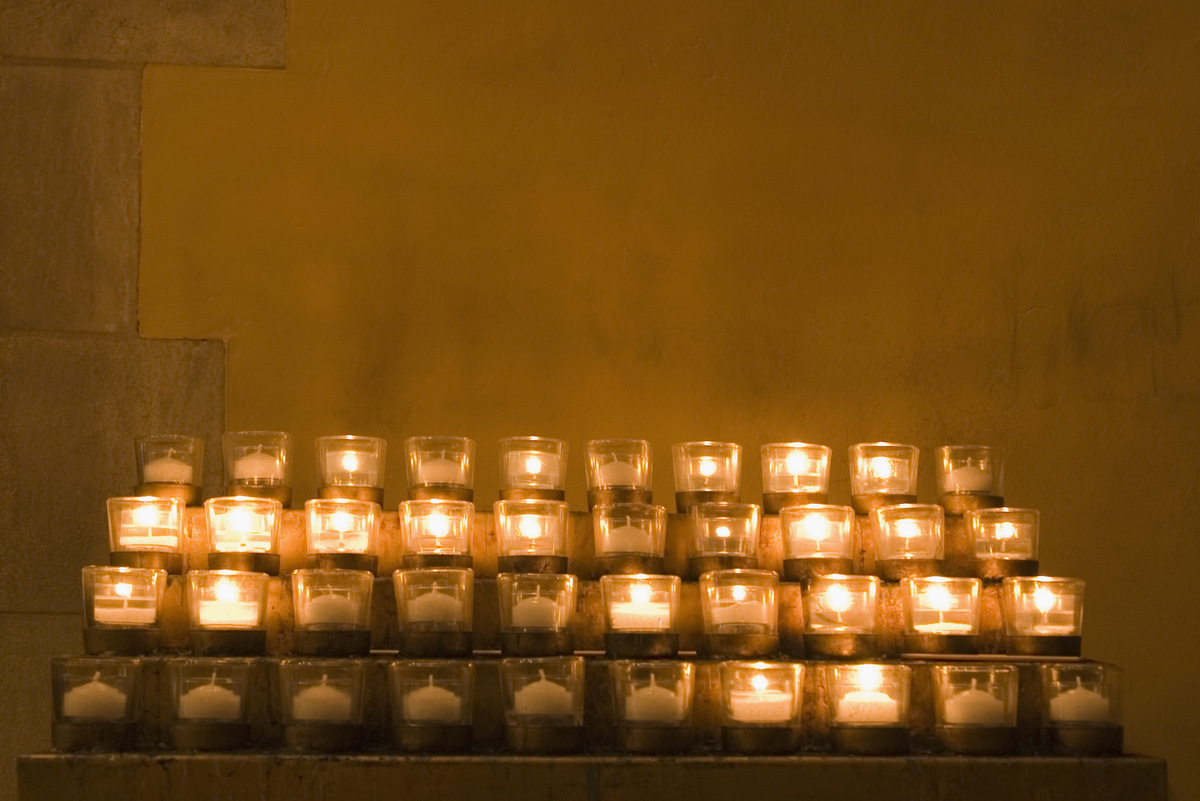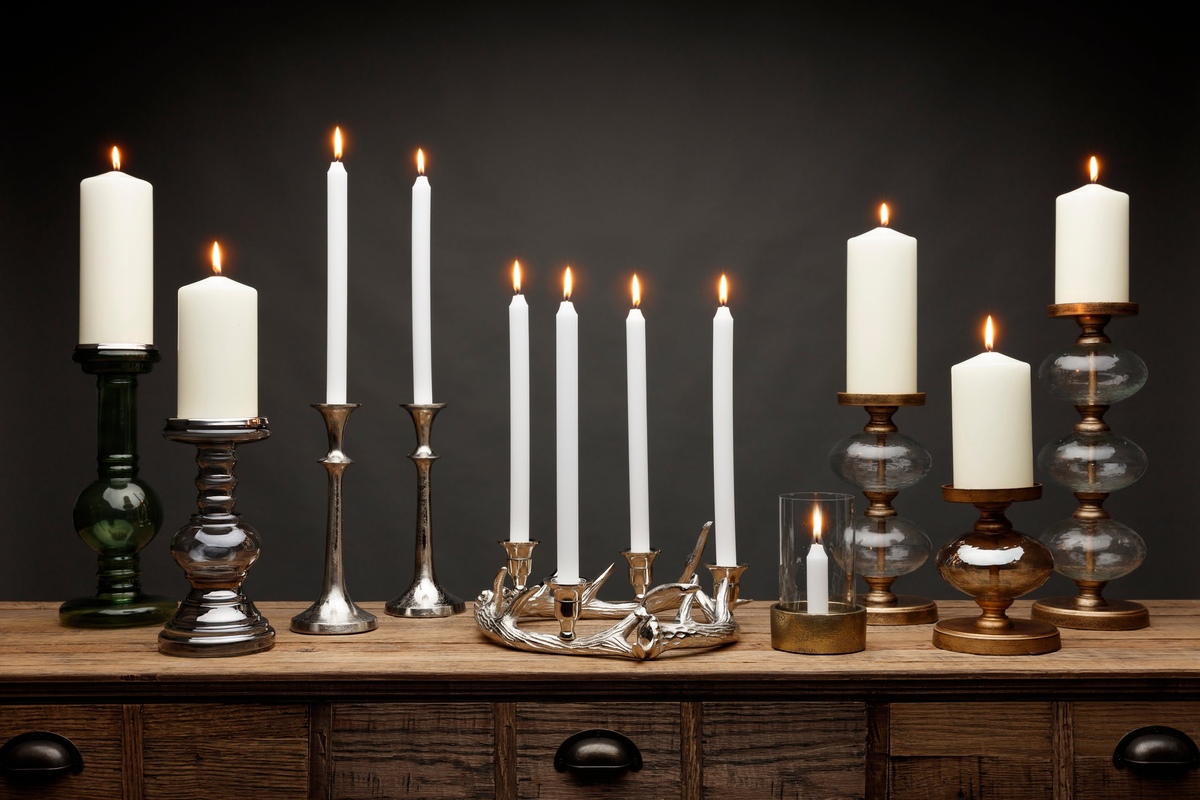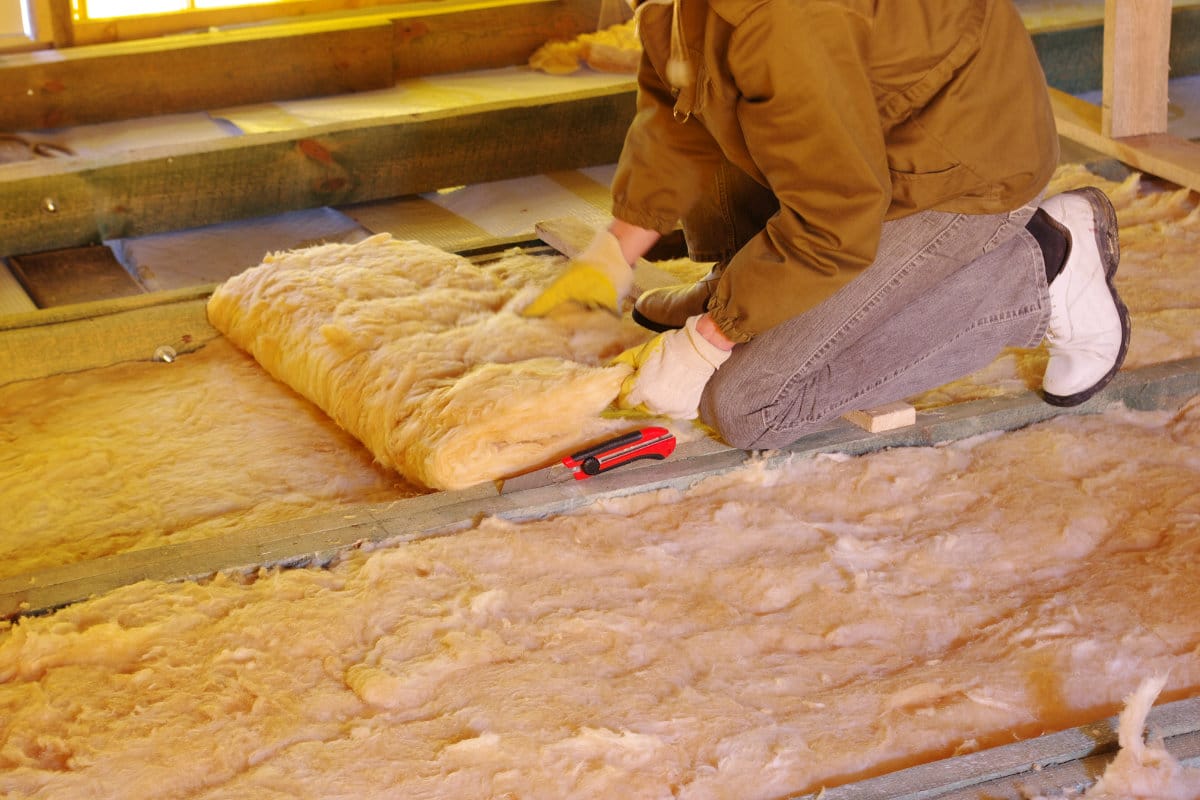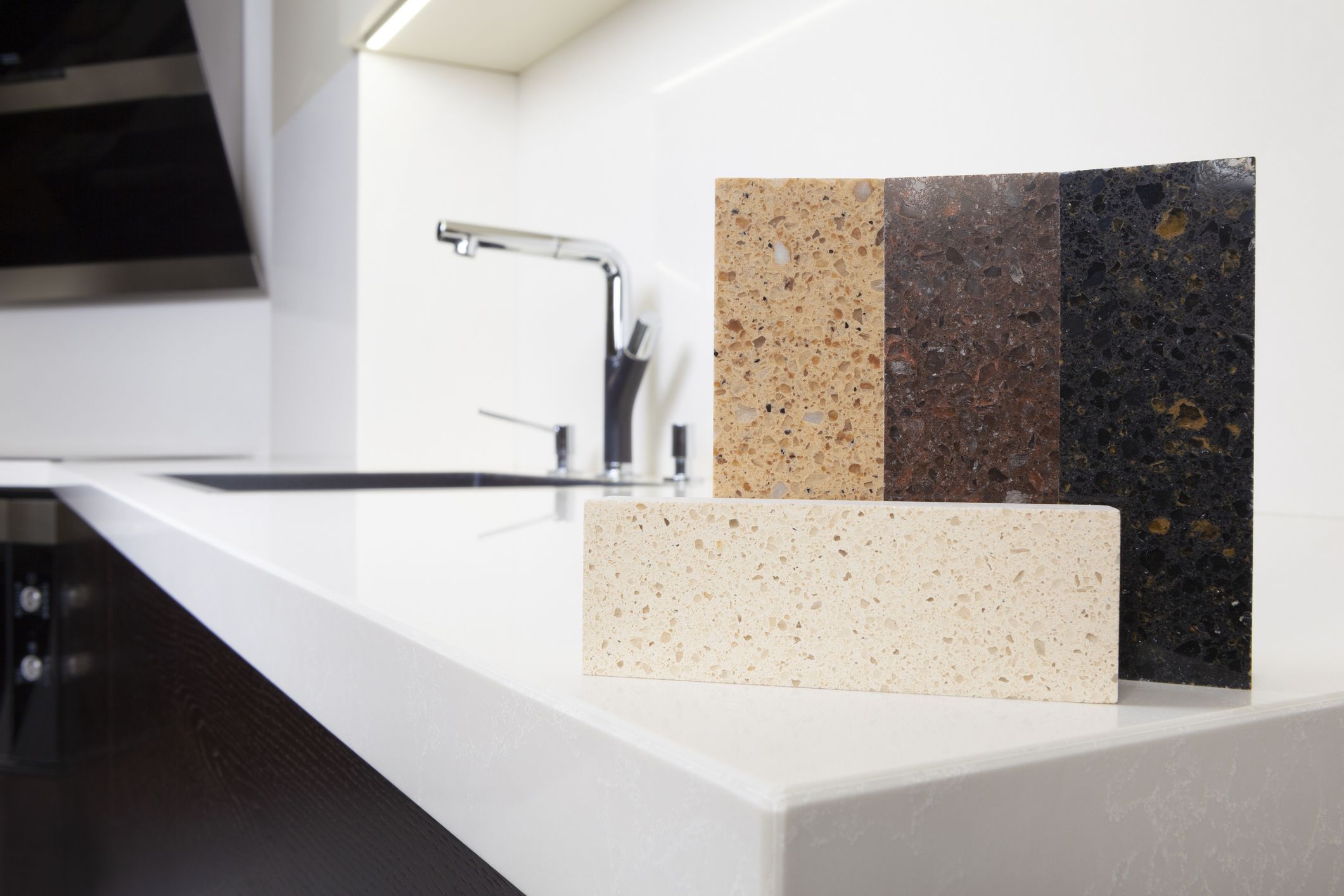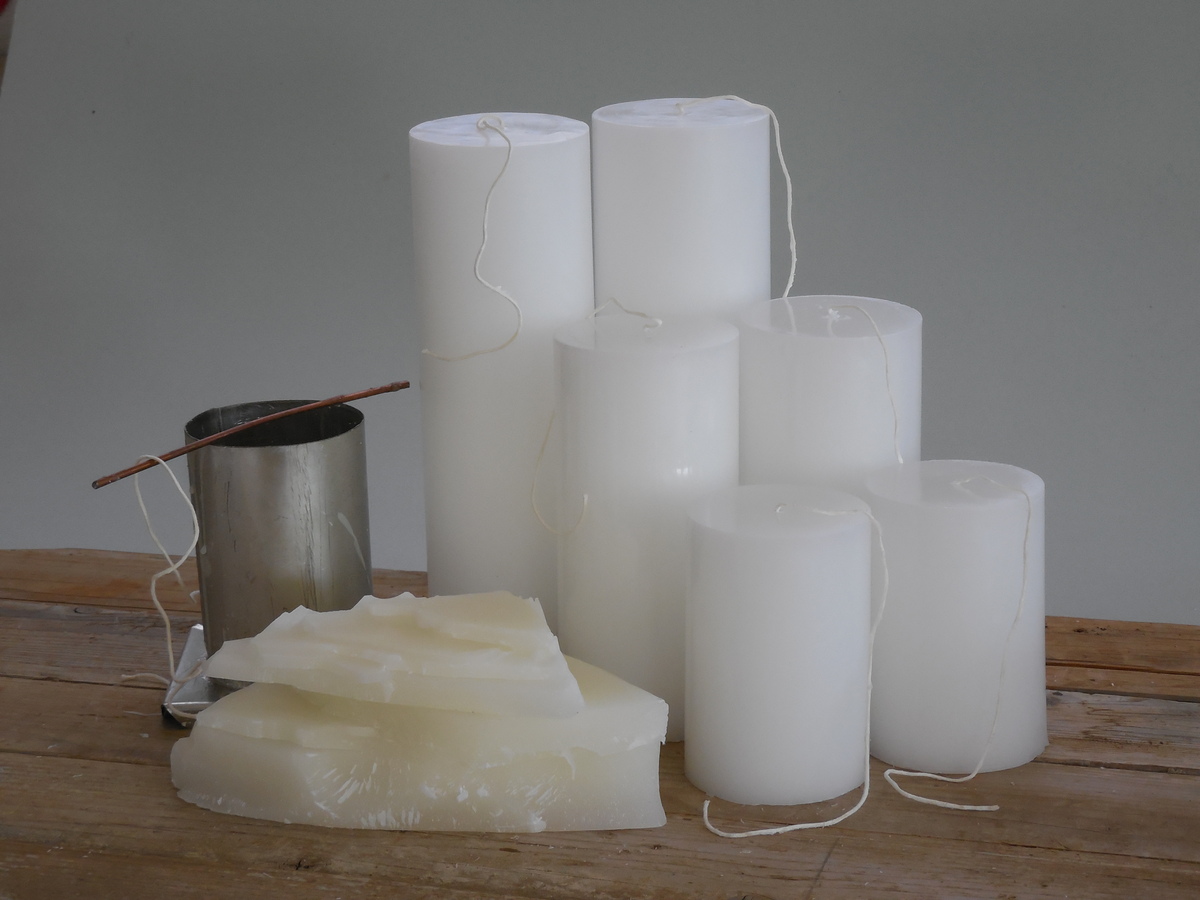

Articles
What Are Candles Made Of
Modified: April 22, 2024
Discover the fascinating world of candle making and learn what materials are used to create these beautiful and fragrant articles. Explore the various ingredients that go into making candles and find inspiration for your own creations.
(Many of the links in this article redirect to a specific reviewed product. Your purchase of these products through affiliate links helps to generate commission for Storables.com, at no extra cost. Learn more)
Introduction
Candles have been a part of human civilization for thousands of years, providing not only light in the darkness but also a sense of warmth, comfort, and tranquility. Whether used for religious ceremonies, romantic evenings, or simply to create a cozy ambiance, candles have a way of transforming any space into a soothing sanctuary.
But have you ever wondered what exactly candles are made of? What are the ingredients that combine to create that beautiful flickering flame and the pleasant aroma that fills the air?
In this article, we will explore the fascinating world of candle making and uncover the basic components that go into crafting these aromatic wonders.
From the types of wax used to the wicks that ignite the flame, and the various additives that enhance the candles’ appearance and scent, we will delve into all the elements that come together to create these beloved sources of light and relaxation.
So, sit back, relax, and let’s embark on a journey to discover what candles are really made of!
Key Takeaways:
- The art of candle making involves choosing the right wax, wick, and additives to create unique, personalized candles that not only illuminate but also evoke emotions and enhance the ambiance of any space.
- Essential oils and fragrance oils offer endless possibilities to create captivating scents, transforming candles into sensory experiences that engage and delight the senses, bringing joy and comfort to those who experience them.
Read more: What Are Yankee Candles Made Of
History of Candles
The history of candles dates back thousands of years, with their origins rooted in ancient civilizations. The ancient Egyptians are credited with being one of the early practitioners of candle making, as evidence of candles made from tallow, a form of animal fat, has been discovered in their tombs.
Throughout history, candles have played a significant role in different cultures and religions. In ancient times, candles were often used in religious ceremonies to symbolize spirituality and divine presence. They were also used as a practical source of light in homes, especially in areas where electricity was not yet available.
The Romans were known for their advancements in candle making, as they began using more sustainable materials like beeswax. Beeswax candles were highly prized for their clean-burning properties and pleasant aroma.
During the Middle Ages, candle making became a specialized craft, with guilds established to regulate the production and quality of candles. Tallow remained a popular choice for candle manufacturing due to its affordability, but beeswax candles were reserved for religious ceremonies and the wealthy elite.
The 18th century marked a turning point in candle making with the discovery of steam distillation, which allowed for the extraction of oils from plants. This led to the introduction of scented candles, with floral and herbal fragrances becoming a popular addition to candle craftsmanship.
With the advent of the Industrial Revolution in the 19th century, candle making underwent a major transformation. Innovations such as the mechanization of wax production and the introduction of molds streamlined the process, making candles more accessible to the masses.
In the 20th century, paraffin wax, derived from petroleum, became the dominant material for candle making due to its affordability and versatility. However, concerns about its environmental impact and potential health risks have led to the rise of alternative waxes such as soy wax and beeswax in recent years.
Today, candles continue to be cherished for their beauty, soothing ambiance, and ability to create a sense of calm in our hectic lives. The art of candle making has evolved with new techniques, innovative designs, and an emphasis on using sustainable and eco-friendly materials.
Now that we have explored the rich history of candles, let’s delve into the basic components that make up these enchanting creations.
Basic Components of Candles
Candles may seem like simple objects, but they are made up of several key components that work together to create the mesmerizing glow and comforting fragrance that we find so appealing. Understanding these basic components is essential to fully appreciate the art of candle making.
At its core, a candle consists of three main components: wax, wick, and additives. Let’s take a closer look at each of these elements:
- Wax: The main ingredient of a candle is wax, which provides the fuel for the flame. Wax is a solid substance that becomes liquid when exposed to heat. It acts as a reservoir for the fuel and also determines the color, appearance, and burn characteristics of the candle.
- Wick: The wick is the vital element that ignites the flame and sustains it. It is typically made of cotton or a cotton-core material and is specially treated to ensure a consistent burn. The size and thickness of the wick play a crucial role in controlling the candle’s burn rate and maintaining a steady flame.
- Additives: Additives are optional ingredients that can be added to candles to enhance their appearance, scent, and performance. These additives include dyes, fragrances, and other substances that impart color, aroma, and special qualities to the candles.
These basic components work harmoniously together to create the final product – a beautifully crafted and aromatic candle.
Now that we understand the fundamental components of candles, let’s explore the different types of wax commonly used in candle making.
Wax: The Main Ingredient
When it comes to candle making, wax is the essential ingredient that serves as the main fuel source for the flame. It is the solid substance that melts when heated, allowing the wick to absorb the liquid wax and fuel the burning process.
Wax contributes to several important aspects of a candle, including its color, appearance, fragrance release, and burn time. Choosing the right type of wax for a candle is crucial in achieving the desired results.
There are several types of wax commonly used in candle making, each with its own unique properties and advantages. Let’s explore some of the most popular types:
- Paraffin Wax: Paraffin wax is one of the most widely used waxes in candle making. It is derived from petroleum and undergoes a refining process to remove impurities. Paraffin wax is known for its affordability, versatility, and excellent fragrance throw. However, it is worth noting that paraffin wax is not a renewable resource and may emit some soot when burned.
- Soy Wax: Soy wax is a natural alternative to paraffin wax and is made from soybean oil. It is biodegradable, renewable, and known for its clean-burning properties. Soy wax candles often have a longer burn time and emit less soot compared to paraffin candles. Additionally, soy wax has the ability to hold fragrance well, resulting in a strong and long-lasting scent.
- Beeswax: Beeswax is a natural wax produced by honey bees and has been used in candle making for centuries. It has a warm, golden color and a subtle natural fragrance. Beeswax candles are highly regarded for their clean-burning nature and long burn time. They emit a lovely, honey-like scent and are considered a sustainable choice.
- Palm Wax: Palm wax is derived from the oil of palm trees and is known for its unique crystalline appearance. It has a high melting point, making it suitable for creating intricate designs and textured candles. Palm wax also provides good fragrance retention and a clean burn.
Aside from these popular waxes, there are also alternative options available, such as coconut wax, rapeseed wax, and even vegetable-based waxes like bayberry wax and carnauba wax. Each wax has its own set of characteristics, and candle makers often experiment with different combinations and blends to create candles that meet their desired standards.
Now that we have explored the main ingredient of candles – wax – let’s dig deeper into the different types of wicks used in candle making.
Types of Wax Used in Candle Making
When it comes to candle making, choosing the right type of wax is crucial in achieving the desired results. Different waxes have varying characteristics and properties that impact the appearance, fragrance release, and burn time of the candles. Let’s explore some of the most commonly used waxes in candle making:
- Paraffin Wax: Paraffin wax is derived from petroleum and is one of the most widely used waxes in candle making. It is known for its affordability and versatility, making it a popular choice among candle makers. Paraffin wax has a high melting point, allowing it to hold its shape well and providing a bright and luminous flame. However, it is worth noting that paraffin wax is not a renewable resource and may emit some soot when burned.
- Soy Wax: Soy wax is a natural alternative to paraffin wax and is derived from soybean oil. It has gained popularity in recent years due to its eco-friendly nature. Soy wax candles are biodegradable, renewable, and known for their clean-burning properties. They often have a longer burn time and emit less soot compared to paraffin candles. Additionally, soy wax has the ability to hold fragrance well, resulting in a strong and long-lasting scent.
- Beeswax: Beeswax is a natural wax produced by honey bees and has been used in candle making for centuries. It has a warm, golden color and a subtle natural fragrance. Beeswax candles are highly regarded for their clean-burning nature and long burn time. They emit a lovely, honey-like scent and are considered a sustainable choice. However, beeswax can be more expensive than other types of wax.
- Palm Wax: Palm wax is derived from the oil of palm trees and is known for its unique crystalline appearance. It has a high melting point, making it suitable for creating intricate designs and textured candles. Palm wax also provides good fragrance retention and a clean burn. However, there are some concerns regarding the sustainability of palm oil production, so it is important to look for sustainably sourced palm wax.
- Coconut Wax: Coconut wax is a natural wax made from the oil of coconuts. It is known for its soft and creamy texture and has excellent fragrance throw. Coconut wax candles have a clean-burning nature and a longer burn time. They also have a natural, tropical scent that pairs well with certain fragrance oils.
- Rapeseed Wax: Rapeseed wax, also known as canola wax, is a vegetable wax that is derived from the oil of rapeseed plants. It is a renewable and biodegradable option for candle making. Rapeseed wax has excellent fragrance retention and provides a clean burn. It is often blended with other waxes to enhance its characteristics.
- Bayberry Wax: Bayberry wax is a natural wax that is derived from the berries of the bayberry bush. It has a lovely green color and a naturally pleasant aroma. Bayberry wax is known for its clean-burning properties and long burn time. However, bayberry wax can be expensive and challenging to work with, making it less commonly used in candle making.
These are just a few examples of the types of wax used in candle making. Candle makers often experiment with different combinations and blends of waxes to achieve the desired characteristics and qualities in their candles. The choice of wax depends on factors such as cost, sustainability, fragrance throw, burn time, and personal preference.
Now that we have explored the various wax options, let’s move on to the next component of candles – the wick.
Read more: What Are Sand And Fog Candles Made Of
Paraffin Wax
Paraffin wax is one of the most widely used waxes in the world of candle making. It is derived from petroleum, a fossil fuel, and goes through a refining process to remove impurities and create a clear and translucent wax. Paraffin wax offers several advantages that make it a popular choice among candle makers.
One of the key benefits of paraffin wax is its affordability. Paraffin wax is relatively inexpensive compared to other types of wax, making it a cost-effective option for mass production of candles. This affordability allows for a wide range of candle varieties to be available to consumers at affordable prices.
Another advantage of paraffin wax is its versatility. It can be easily molded into different shapes and sizes, making it suitable for a variety of candle styles and designs. Paraffin wax is known for its high melting point, which enables candles to hold their shape even in warmer environments, ensuring durability and longevity.
In addition to its versatility, paraffin wax offers excellent fragrance throw. Its molecular structure allows it to absorb and release fragrance oils effectively, resulting in candles with strong and long-lasting scents. This makes paraffin wax candles particularly appealing for those who enjoy aromatherapy or want to fill their space with delightful aromas.
However, it is important to note that paraffin wax has some disadvantages as well. One of the concerns associated with paraffin wax is its environmental impact. Since it is derived from petroleum, the extraction and production process contribute to carbon emissions and the depletion of natural resources.
Furthermore, when burned, paraffin wax may release some soot and potentially harmful substances into the air. This can lead to indoor air pollution and may cause respiratory issues for individuals with sensitivities or allergies. To minimize these risks, it is recommended to burn paraffin wax candles in a well-ventilated area and trim the wick regularly.
In recent years, there has been an increasing demand for more sustainable and eco-friendly alternatives to paraffin wax. As a result, candle makers have been exploring and adopting options such as soy wax, beeswax, and other plant-based waxes. These alternatives offer renewable and biodegradable options that are considered more environmentally friendly compared to paraffin wax.
Despite its drawbacks, paraffin wax remains a widely used and valued wax in candle making due to its affordability, versatility, and excellent fragrance throw. Whether you prefer the classic look and scent of paraffin wax candles or opt for more sustainable alternatives, the choice ultimately comes down to personal preference and priorities.
Now that we have explored paraffin wax, let’s move on to discover another popular wax option – soy wax.
Soy Wax
Soy wax is a natural and eco-friendly alternative to traditional paraffin wax in the world of candle making. It is made from the oil of soybeans, a renewable resource, and offers several advantages that have made it a popular choice among candle makers and consumers alike.
One of the key benefits of soy wax is its sustainability. Soybeans are a renewable crop, and the production of soy wax has a lower impact on the environment compared to the extraction and processing of petroleum-based paraffin wax. This makes soy wax a favorable option for eco-conscious individuals who want to reduce their carbon footprint.
Another advantage of soy wax is its clean-burning nature. Soy wax candles produce minimal soot and smoke, resulting in a cleaner and healthier burning experience. This is particularly beneficial for individuals with respiratory sensitivities or allergies. Additionally, the low soot production of soy wax means that it is easier to clean and maintain candle holders and surfaces.
Soy wax also has an impressive fragrance throw. Its composition allows it to hold and release fragrance oils effectively, resulting in candles with strong and long-lasting scents. This makes soy wax candles a popular choice for those who enjoy filling their homes with captivating aromas.
In addition to its performance, soy wax offers a longer burn time compared to paraffin wax. Soy wax candles tend to burn slower and cooler, which means they can last longer, providing more hours of enjoyment. This longer burn time also contributes to the cost-effectiveness of soy wax candles, as they tend to last longer and offer better value for money.
Furthermore, soy wax is biodegradable and cleans up easily with soap and water. This makes it convenient for candle makers and consumers who prefer a more environmentally friendly and hassle-free option.
Despite its numerous advantages, it is important to note that soy wax has some limitations as well. Soy wax has a lower melting point compared to paraffin wax, which means it may not hold its shape as well in very hot climates or under direct sunlight. To overcome this, candle makers often blend soy wax with other types of wax, such as beeswax or palm wax, to improve its structural stability.
Overall, soy wax is a versatile and sustainable option that has gained popularity due to its eco-friendly nature, clean burn, strong fragrance throw, and longer burn time. Whether you prefer traditional or scented candles, choosing soy wax can be a conscious and responsible choice that adds a touch of warmth and ambiance to any space.
Now that we have explored soy wax, let’s move on to discover another popular wax option – beeswax.
Beeswax
Beeswax is a natural wax that has been used in candle making for centuries. Made by honey bees, beeswax offers a range of unique qualities that make it a sought-after choice among candle makers and those who appreciate natural products.
One of the standout features of beeswax is its natural and beautiful golden color. Unlike other waxes, beeswax does not require any additional coloring agents or dyes to achieve a pleasing hue. Its warm and inviting color adds a touch of natural elegance to any candle, making it a popular choice for those who appreciate the aesthetic appeal of candles.
Another notable quality of beeswax is its subtle yet delightful natural fragrance. Beeswax candles emit a gentle, honey-like aroma when burned, which can create a soothing and calming atmosphere. The natural scent of beeswax enhances the sensory experience of candlelight and adds an extra element of enjoyment to any space.
Aside from its visual and olfactory appeal, beeswax is highly regarded for its clean-burning nature. Beeswax candles have a high melting point, which means they burn slower and longer compared to other types of candles. This longer burn time makes beeswax candles a cost-effective option, as they provide hours of beautiful light and fragrance.
In addition, beeswax candles are known for their clean and minimal soot production. They burn with a clean, bright flame and release negligible amounts of smoke, making them a healthier choice for indoor use. The lack of soot also means that beeswax candles do not leave behind black residue on walls or ceilings, making them easier to clean up after use.
Furthermore, beeswax is a natural and renewable resource. It is produced by bees as they construct their honeycombs, and the wax is harvested during the process of extracting honey. This makes beeswax a sustainable and environmentally friendly choice for candle making.
However, it is worth noting that beeswax can be more expensive compared to other types of wax. This is because beeswax production is labor-intensive, and the yield of beeswax is relatively low compared to other waxes. Despite the higher cost, many individuals are willing to invest in beeswax candles for their unique qualities and eco-friendly attributes.
Whether used for religious ceremonies, meditation practices, or simply to create a warm and inviting atmosphere, beeswax candles have a timeless appeal that has stood the test of time. The combination of its natural color, gentle fragrance, clean burn, and sustainable nature make beeswax a popular choice for those seeking a touch of nature and luxury in their candle experience.
Now that we have explored beeswax, let’s move on to discover another popular wax option – palm wax.
When making candles, consider using natural waxes like soy, beeswax, or coconut wax for a cleaner burn and avoid paraffin wax which can release harmful chemicals when burned.
Palm Wax
Palm wax is a unique and popular choice in the world of candle making. Derived from the oil of palm trees, palm wax offers distinct characteristics that make it a sought-after wax option for both candle makers and candle enthusiasts.
One of the standout features of palm wax is its unique crystalline appearance. When cooled and solidified, palm wax forms beautiful patterns that resemble crystallized structures. This natural texture adds an eye-catching element to candles, creating a visually appealing and decorative piece.
In addition to its aesthetic appeal, palm wax offers excellent fragrance retention. The crystalline structure of palm wax allows for better absorption and release of fragrance oils compared to other waxes. As a result, palm wax candles tend to have a strong and long-lasting scent, filling the surrounding space with delightful aromas.
Palm wax also provides a clean and even burn. It has a high melting point, which means that palm wax candles can withstand warmer environments without losing their shape or melting too quickly. This makes palm wax candles suitable for outdoor use or in areas with higher temperatures.
Furthermore, palm wax is considered a sustainable option for candle making. Palm trees are a renewable resource, and the production of palm wax supports the economic growth of palm-growing regions. However, it is important to source palm wax from sustainable and certified plantations, as there are concerns about deforestation and habitat destruction associated with some palm oil production.
When it comes to candle making, palm wax is versatile and easy to work with. It blends well with other waxes and can be used to create various candle formats, from pillars to container candles. Its ability to hold intricate designs and textures makes palm wax particularly suitable for creating visually stunning candles.
Despite its many advantages, it is worth noting that palm wax may be more challenging to find compared to other waxes, as it is not as widely available. However, the unique characteristics and environmental sustainability of palm wax make it a favored choice among those seeking eco-friendly and visually appealing candle options.
Whether you’re searching for a striking centerpiece or a candle with an exceptional fragrance throw, palm wax candles can provide a beautiful and aromatic addition to any space. Their crystalline appearance, strong fragrance retention, and sustainability make palm wax a valued option in the world of candle making.
Now that we have explored palm wax, let’s move on to discover alternative wax options that can be used in candle making.
Read more: Where Are Nest Candles Made
Other Wax Alternatives
In addition to the popular wax options like paraffin, soy, beeswax, and palm wax, there are several alternative waxes available for candle making. These alternative waxes offer unique characteristics and benefits, expanding the possibilities for creating distinctive and environmentally-friendly candles. Let’s explore some of these wax alternatives:
- Coconut Wax: Coconut wax is derived from the oil of coconuts, making it a natural and renewable resource. It has a soft and creamy texture and offers excellent fragrance throw. Coconut wax candles have a clean-burning nature and a longer burn time. The natural tropical scent of coconut wax can bring a sense of relaxation and vacation vibes to any space.
- Rapeseed Wax: Rapeseed wax, also known as canola wax, is a vegetable wax made from the oil of rapeseed plants. It is biodegradable and offers a clean and long-lasting burn. Rapeseed wax has excellent fragrance retention, making it a great choice for scented candles. Its renewable and eco-friendly nature appeals to those concerned about sustainability.
- Bayberry Wax:Bayberry wax is a natural wax derived from the berries of the bayberry bush. It has a beautiful dark green color and a unique earthy, herbal scent. Bayberry wax is known for its clean-burning properties and long burn time. However, it can be more expensive and less commonly found compared to other wax options.
- Sustainable Plant-Based Waxes: There are several other plant-based waxes that can be used as alternatives to traditional wax options. This includes soybean wax, sunflower wax, rice bran wax, and more. These waxes are often sourced from sustainable and renewable plant-based materials, making them eco-friendly choices for candle making.
Each alternative wax has its own set of characteristics and advantages, providing candle makers with a range of options to explore and experiment with. These alternative waxes offer opportunities to create unique candles that cater to specific preferences, whether it be sustainability, fragrance retention, or aesthetics.
It’s worth noting that some of these alternative waxes may not be as widely available as the more popular wax options. However, with the growing interest in eco-friendly and sustainable products, the availability of alternative waxes is steadily increasing.
Before using any wax, it’s important to carefully research and source your materials from reputable suppliers. This ensures that you are using high-quality and responsibly-produced wax in your candle making process.
Now that we have explored various wax alternatives, let’s move on to the next essential component of candles – wicks.
Wicks: The Burning Element
Wicks play a crucial role in candle making as they are responsible for igniting the flame and sustaining the burn. Choosing the right wick is essential to ensure an even and efficient burn, as well as achieving the desired flame height and candle performance.
Wicks are typically made of braided cotton or cotton-core material, which is treated with various substances to enhance the burn characteristics and stability. The size and structure of the wick determine how the candle burns and how the wax is consumed.
There are different types of wicks available to cater to specific candle sizes, wax types, and burning requirements. Let’s explore some of the common wick types used in candle making:
- Flat Wick: Flat wicks are thin and flat in shape. They are often used in taper candles or candles that require a low flame. Flat wicks provide a compact and steady flame, creating an elegant and controlled burn.
- Round Wick: Round wicks are the traditional wick type used in most candle varieties. They come in various thicknesses, allowing for customization based on the diameter and height of the candle. Round wicks are versatile and work well with different types of wax.
- Wooden Wick: Wooden wicks have gained popularity in recent years, as they offer a unique and crackling flame reminiscent of a cozy fireplace. They are typically made of natural wood, such as maple or cherry, and provide a beautiful visual and auditory experience during candle burning.
- Self-Trimming Wick: Self-trimming wicks are designed to curl or curl slightly when burned. This curling action helps to remove the burnt wick debris, preventing mushrooming and maintaining a clean and efficient burn. Self-trimming wicks contribute to longer burn times and reduce the need for frequent trimming.
- Extra-Long Wick: Extra-long wicks are used in container candles or pillar candles with deep recesses. They allow the flame to reach down to the bottom of the container or the recess, ensuring an even and complete burn of the wax.
It’s essential to choose the appropriate wick size for your specific candle as this determines the rate at which the wax is consumed and the size of the flame. A wick that is too small may result in a weak flame and tunneling, while a wick that is too large can lead to excess smoke, soot, and an uneven burn.
When testing wicks, it’s advisable to experiment with different sizes and types to find the optimal wick for your candle. Factors such as the type of wax, diameter of the candle, and desired burn time should be taken into consideration. Conducting burn tests and observing the performance of the wick will help ensure a successful and satisfying candle experience.
It’s important to note that wick maintenance is crucial for a safe and efficient burn. Trimming the wick to approximately ¼ inch (6mm) before each use helps control the flame height and minimizes soot production. Additionally, ensuring that the wick is centered and upright during the initial pouring and cooling process helps promote an even burn.
Now that we have explored the vital role of wicks, let’s dive into the various additives and fragrances that enhance the appearance and scent of candles.
Types of Wicks
When it comes to candle making, choosing the right wick is essential for achieving an optimal burn and ensuring a pleasant candle experience. There are various types of wicks available, each with its own characteristics and suitability for different candle types and sizes. Let’s explore some of the common types of wicks used in candle making:
- Cotton Wicks: Cotton wicks are the most common type of wick used in candles. They are made of braided cotton fibers and are known for their versatility and clean burn. Cotton wicks come in different sizes and can be found in flat or round shapes. They are suitable for various wax types and can provide an even and steady flame.
- Cotton Core Wicks: Cotton core wicks are similar to cotton wicks but have a small inner core made of either paper or cotton. The core provides stability to the wick, making it less prone to flopping or bending. Cotton core wicks are often used in larger candles or those with a high fragrance load, as they can help provide a more robust burn.
- Wooden Wicks: Wooden wicks have gained popularity in recent years for their unique aesthetic and crackling sound reminiscent of a cozy fireplace. They are typically made of natural wood, such as maple or cherry, and are designed to provide a wider and more dramatic flame. Wooden wicks work well with soy wax and other soft waxes and are especially suited for container candles.
- Paper Wicks: Paper wicks are made of braided or twisted paper and are generally used in smaller, decorative candles. They are often found in tea lights or votive candles. Paper wicks tend to burn more quickly and may require larger sizes to achieve the desired flame height. They are a cost-effective option for small candles and can provide a clean burn when appropriately sized.
- Metal Core Wicks: Metal core wicks are typically made with a cotton or paper outer shell and a metal core running through the center. The metal core provides rigidity and stability to the wick, making it suitable for larger candles or those with uneven or challenging wax compositions. Metal core wicks are commonly used in pillar candles or container candles with unique candle formulations.
When choosing a wick, considerations such as candle size, wax type, fragrance load, and desired burn time should influence the selection. It is essential to conduct burn tests when using a new wick type or when making adjustments to the candle’s composition to achieve the best burn performance.
It’s worth noting that wick size plays a crucial role in achieving an optimal burn. A wick that is too small may result in a weak flame and tunneling, where the candle burns straight down the center, leaving wax residue on the sides. On the other hand, a wick that is too large can cause excessive flickering, smoking, and mushrooming.
Trimming the wick to the recommended length before each use and ensuring proper alignment during the pouring and cooling process are essential for maintaining an even burn and minimizing soot production. Proper wick maintenance helps maximize the lifespan of the candle and ensures a safe and enjoyable burning experience.
Now that we have explored the different types of wicks, let’s move on to discussing the various additives and fragrances that can enhance the appearance and scent of candles.
Additives and Fragrances
When it comes to candle making, additives and fragrances play a significant role in enhancing the appearance and scent of the final product. These elements allow for a personalized touch, creating candles that not only provide light but also fill the room with delightful aromas. Let’s explore the different additives and fragrances used in candle making:
Dyes and Pigments: Dyes and pigments are used to add color to candles, creating a visually appealing product. Dyes come in various forms such as liquid, powder, or chips and can be mixed to achieve custom shades. Pigments, on the other hand, are more concentrated and can create vibrant and intense colors. Whether you prefer subtle pastels or bold and vibrant hues, dyes and pigments offer endless possibilities for adding color to your candles.
Essential Oils and Fragrance Oils: Essential oils and fragrance oils are used to impart pleasing scents to candles. Essential oils are derived from natural sources such as plants, flowers, or fruits and offer a range of aromatherapeutic benefits. They provide a natural and subtle fragrance that can enhance relaxation, uplift the mood, or promote focus. Fragrance oils, on the other hand, are synthetic compounds specifically designed to create a variety of scents. They offer a broader range of fragrance options, mimicking the smells of nature, food, or other pleasing scents. Both essential oils and fragrance oils come in a wide array of choices, allowing candle makers to create custom scents or replicate popular fragrances.
Specialty Additives: Specialty additives can be used to enhance certain aspects of candles. Some common specialty additives include:
- UV Inhibitors: UV inhibitors can be added to candles to prevent fading and discoloration when exposed to sunlight.
- Stabilizers: Stabilizers can be added to help extend the shelf life of fragrances and maintain their potency over time.
- Texturizers: Texturizers are additives that create unique textures in the wax, such as a mottled or marbled effect.
- Flame Retardants: Flame retardants can be added to increase the fire safety of candles, particularly for those used in public spaces.
- Exfoliants or Botanicals: Exfoliants or botanicals can be added for aesthetic purposes, providing visual interest or texture in the candle.
These specialty additives allow for creative experimentation, enabling candle makers to craft candles with extra features or unique visual appeal.
When working with additives and fragrances, it’s important to follow recommended usage guidelines provided by the supplier. Each fragrance or dye may have specific instructions in terms of usage rates, optimal conditions, and any potential compatibility issues. Conducting small test batches and keeping detailed records of your candle-making experiments can help refine your techniques and achieve the desired results.
Remember, the combination of additives and fragrances is an art form that allows you to express your creativity and create candles tailored to individual preferences. The right blend of colors and scents can transform a simple candle into a sensory experience that brings joy and relaxation to those who use it.
With a myriad of options available, candle makers can craft candles that align with their vision and cater to the diverse tastes and preferences of their customers. Now that we have explored additives and fragrances, let’s summarize our findings in the final section.
Read more: How Were Candles Made In The 1700s?
Dyes and Pigments
When it comes to candle making, dyes and pigments are essential additives used to add color and visual appeal to candles. They allow for customization and creativity, transforming ordinary wax into vibrant and eye-catching creations. Let’s explore the world of dyes and pigments in candle making:
Dyes: Dyes are specially formulated colorants designed to dissolve and disperse in the wax, creating a uniform and consistent color throughout the candle. They come in various forms, such as liquid, powder, or chips, offering versatility in application. Dyes are available in an extensive array of colors, allowing candle makers to achieve virtually any shade or hue desired. Whether you prefer soft, pastel tones or bold and vibrant shades, dyes offer endless possibilities for infusing color into your candles.
Pigments: Pigments are highly concentrated colorants that can create rich, intense, and deep hues in candles. Unlike dyes, pigments do not dissolve in wax, but rather disperse into it. They are available in powder form and need to be thoroughly mixed into the melted wax to achieve an even color distribution. Pigments offer excellent color saturation and can be used to create vivid and vibrant candles. However, due to their concentrated nature, it’s important to use pigments sparingly and carefully follow usage guidelines to avoid overpowering the desired shade.
When working with dyes and pigments in candle making, it’s important to consider a few key points. First, always use dyes and pigments specifically formulated for candle making, as they are designed to be heat-resistant and safe for use in candles. Second, be mindful of the color concentration and adjust the quantity or ratio of dye/pigment to achieve the desired shade. It’s advisable to start with small amounts and gradually add more until the desired color is reached. Remember that the color may appear darker when the wax is melted and will lighten slightly as it cools and solidifies.
It’s also worth noting that different types of waxes may affect the final color outcome. Certain waxes may exhibit more translucency, allowing the true color to shine through, while others may have a more opaque appearance, which may alter the perceived color slightly. Conducting small test batches, documenting the amounts used, and keeping records of the desired color achieved can help create consistency in future candle-making endeavors.
When using dyes and pigments, it’s important to maintain a well-ventilated workspace and wear appropriate protective equipment, such as gloves and goggles, to prevent contact with skin or eyes. Proper cleaning and disposal measures should also be followed to ensure a safe and environmentally responsible candle-making process.
With dyes and pigments, you can unleash your creativity and personalize your candles to suit your style or match specific themes or occasions. Whether you prefer subtle and delicate hues or bold and vibrant tones, dyes and pigments offer limitless possibilities for infusing your candles with a burst of color and visual impact.
Now that we have explored dyes and pigments, let’s summarize our findings in the final section.
Essential Oils and Fragrance Oils
When it comes to candle making, essential oils and fragrance oils are key additives that bring delightful scents to candles. They offer the opportunity to create a variety of aromas, turning candles into not only a light source but also an experience for the senses. Let’s delve into the world of essential oils and fragrance oils in candle making:
Essential Oils: Essential oils are derived from natural sources such as plants, flowers, fruits, and herbs. They are highly concentrated, volatile compounds that carry the characteristic aroma of the source material. Essential oils offer not only pleasing scents but also potential therapeutic benefits as they are known to have various wellness properties. When used in candles, essential oils can infuse the air with their natural fragrances, creating an ambiance that promotes relaxation, uplifts the mood, or aids in focus and concentration. Some popular essential oils used in candle making include lavender, eucalyptus, lemon, peppermint, and rosemary, among many others. It’s important to use high-quality, 100% pure essential oils to ensure the best quality scent and therapeutic experience.
Fragrance Oils: Fragrance oils are synthetic compounds specifically designed to create a wide range of scents. They offer an extensive variety of fragrances beyond what can be naturally extracted from plant-based sources alone. Fragrance oils can mimic the scents of various flowers, fruits, spices, and other aromatic elements. This allows candle makers to create an immense selection of scents, from delightful floral bouquets to mouthwatering bakery aromas. Fragrance oils come in countless options, including seasonal scents, designer-inspired choices, and custom blends. They provide flexibility in crafting candles that cater to different preferences and trends. However, it’s essential to choose high-quality fragrance oils from reputable suppliers to ensure safety and a true representation of the intended scent.
When working with essential oils and fragrance oils, it’s important to consider a few key factors. First, the potency of scents can vary, so it’s advisable to start with a conservative amount and gradually increase the concentration until the desired aroma is achieved. It’s better to have a subtly scented candle that can be enjoyed than an overpowering fragrance that overwhelms the senses. Second, consider the compatibility of the chosen oil with the specific wax being used, as certain oils may perform differently depending on the wax composition. Always check supplier recommendations and conduct burn tests to ensure a harmonious blend and maximize fragrance throw.
Essential oils and fragrance oils offer endless possibilities to create candles that not only provide visual beauty but also transport individuals into their desired ambiance through captivating scents. From relaxation and stress relief to invigoration and enjoyment, the aroma of a well-crafted scented candle can have a profound impact on the overall candle experience.
Now that we have explored essential oils and fragrance oils, let’s summarize our findings in the final section.
Final Thoughts
Candle making is an art form that combines creativity, craftsmanship, and attention to detail. Understanding the basic components of candles, such as wax, wicks, additives, and fragrances, allows you to create candles that not only provide illumination but also evoke emotions and enhance the ambiance of any space.
Choosing the right wax is a crucial decision, as it affects the appearance, burn characteristics, and sustainability of your candles. Whether you opt for paraffin wax, soy wax, beeswax, palm wax, or any other alternative, each wax offers its own unique qualities and benefits.
The choice of wick determines how evenly your candle burns and how it interacts with the chosen wax. Exploring different wick types, such as cotton wicks, wooden wicks, and self-trimming wicks, allows you to tailor the burning experience to your desired flame size, burn time, and performance.
Additives and fragrances bring an extra layer of customization to your candles. Dyes and pigments enable you to infuse color into your creations, while essential oils and fragrance oils allow you to fill the air with captivating and soothing scents. Experimentation with various combinations and concentrations brings endless possibilities, transforming your candles into sensory experiences that engage and delight the senses.
As you embark on your candle-making journey, remember to prioritize safety and quality. Source your materials from reputable suppliers, follow recommended usage guidelines, and conduct burn tests to fine-tune your techniques and achieve optimal results. Document your experiments, take note of your successes, and learn from any challenges to continue improving your craft.
Candle making is a rewarding and fulfilling hobby that allows you to express your creativity and create unique, personalized candles. From providing moments of tranquility, romance, or celebration to serving as thoughtful gifts for loved ones, your candles have the potential to bring joy and comfort to those who experience them.
So, light up your creativity, blend your chosen components with care, and let the glow and scent of your handmade candles create a warm and inviting atmosphere wherever they are enjoyed.
Frequently Asked Questions about What Are Candles Made Of
Was this page helpful?
At Storables.com, we guarantee accurate and reliable information. Our content, validated by Expert Board Contributors, is crafted following stringent Editorial Policies. We're committed to providing you with well-researched, expert-backed insights for all your informational needs.
